The value of an object is often framed in terms of its completeness. As individuals and as a museum, we like pristine things and try to keep them that way. If something breaks, we repair it. If it is broken beyond repair, we may replace it. And yet, sometimes it is the broken, incomplete things that yield the greatest insights into past lives. In this blog, Dr Matt Knight explores this idea through the treatment of bronze and gold objects from the Bronze Age in Scotland (c.2400 – 800BC).
Much of what we find during archaeological excavations are fragments of objects and materials. Some of this is down to the passing of time, but sometimes we find things that were intentionally broken or damaged before being deposited. How can we make sense of this deliberate destruction?
Why do we break things?
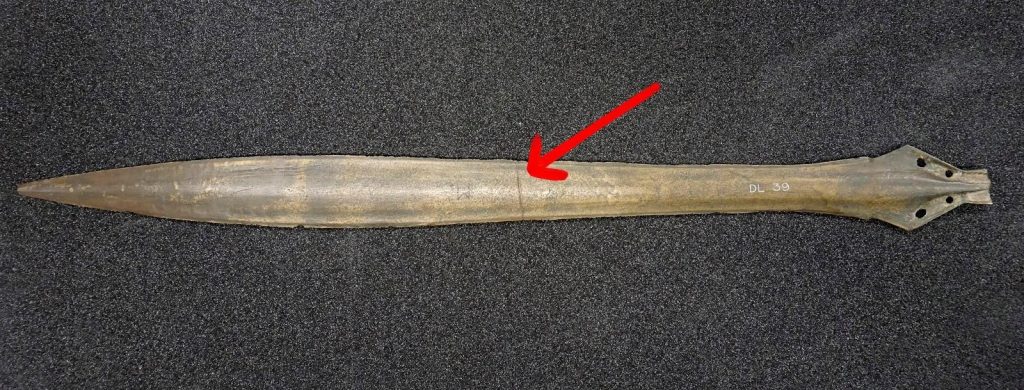
We can start by asking the question, why do people intentionally break things today? Destruction might be a social or political act, like vandalism or iconoclasm. It might be superstitious, like breaking a bottle against a boat for good luck. Sometimes a possession is broken when someone dies or when a relationship ends, symbolically breaking the link between the person and the object.
These ideas hint at the wonderful range of reasons things might be destroyed and the symbolic nature of breaking things. Breaking things in this way is an emotional act. The act of destruction itself takes on value, whether for commemoration or catharsis.
The examples of Bronze Age objects below show that this isn’t exclusive to our modern cultures. We can trace acts of deliberate breakage and deformation all the way through human history.
Roll up! Roll up!

The first object is, I hope you’ll agree, rather spectacular. The Auchentaggart lunula from Dumfries and Galloway is a decorated gold collar, barely thicker than tin foil. It is one of the earliest pieces of goldwork from Scotland. It required access to a fair chunk of gold as well as skills to craft such a beautiful, fragile ornament – a true sign of status.
Many lunulae were buried complete and undamaged, but the Auchentaggart example was “folded together and rolled up almost like a ball” before burial. Curiously, this is not an isolated case. A lunula from Orbliston, Moray, was found “closely rolled up” and 16 examples from Ireland were also probably rolled or folded when buried. Some show signs of having been rolled and unrolled several times. This was reversible damage.

This all begs the question: why would you fold, roll and bury a piece of your jewellery? Ornaments are usually quite personal things, but lunulae are never found with human burials. It seems the objects were deliberately separated from the people. Perhaps rolling and folding ornaments may have been part of this separation, physically transforming the objects to look different from how they were worn.
This transformation might also be what made these objects suitable for placing in the ground, although the existence of complete examples shows that this wasn’t an essential task. This was perhaps a personalised response to individual situations.
Completely incomplete
Other instances of damage are more obvious. A hoard from Hill of Finglenny, Aberdeenshire, includes four complete axeheads and three axeheads deliberately snapped in half. The axes are quite thick objects, and breakage would have been difficult to achieve if you didn’t know what you were doing.
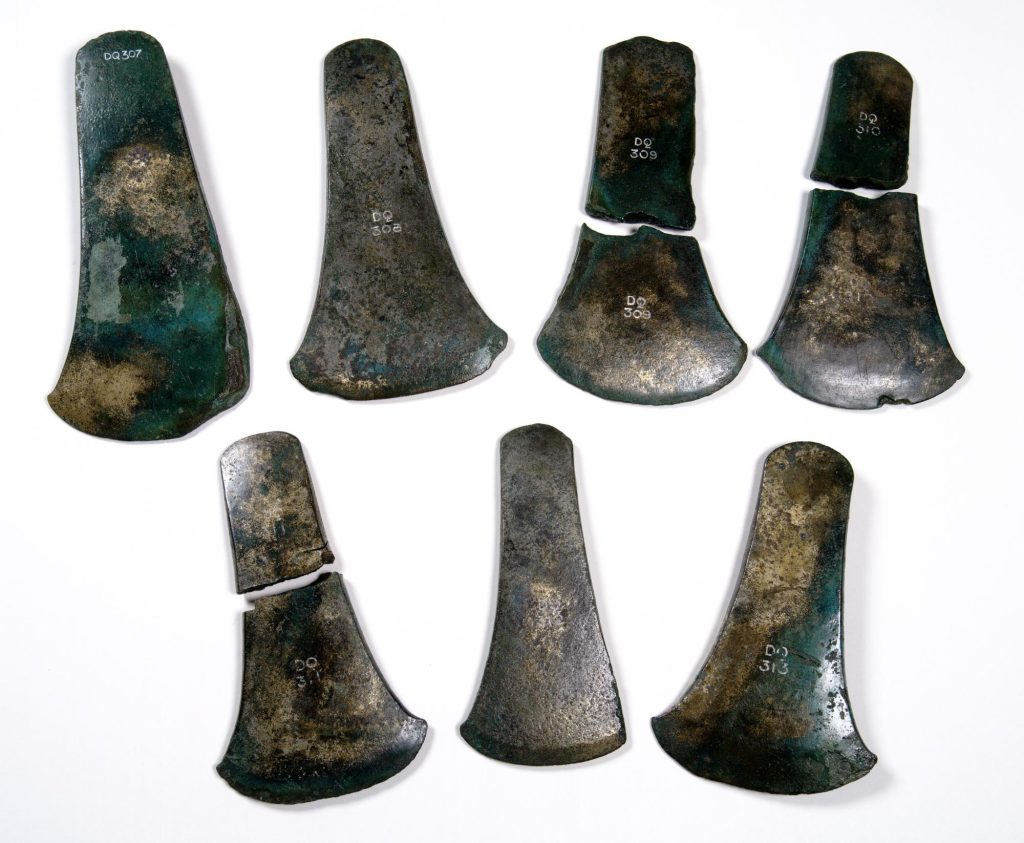
The axeheads needed to be heated to high temperatures before they were struck with hammers and chisels, which would then cause them to snap in two. All of this suggests a pre-meditated decision to break these axes that required material knowledge and suitable tools. In other words, damage was a choice and a choice that took significant effort. What motivated this choice? Why were some left complete and others broken?
Research into these axes by Dr Rachel Crellin, amongst others, has highlighted various signs of use and wear, as well as differences in their breakage. This suggests the axes had different histories of use and, possibly, ownership leading up the point of burial. These differences in the ‘life’ of the axes may have influenced which got broken and which didn’t. Nonetheless, both pieces of each broken axe were kept together in this hoard. This suggests there was symbolism in keeping the incomplete, complete. The differences in treatment reflect different values attached to the artefacts even within a single hoard.
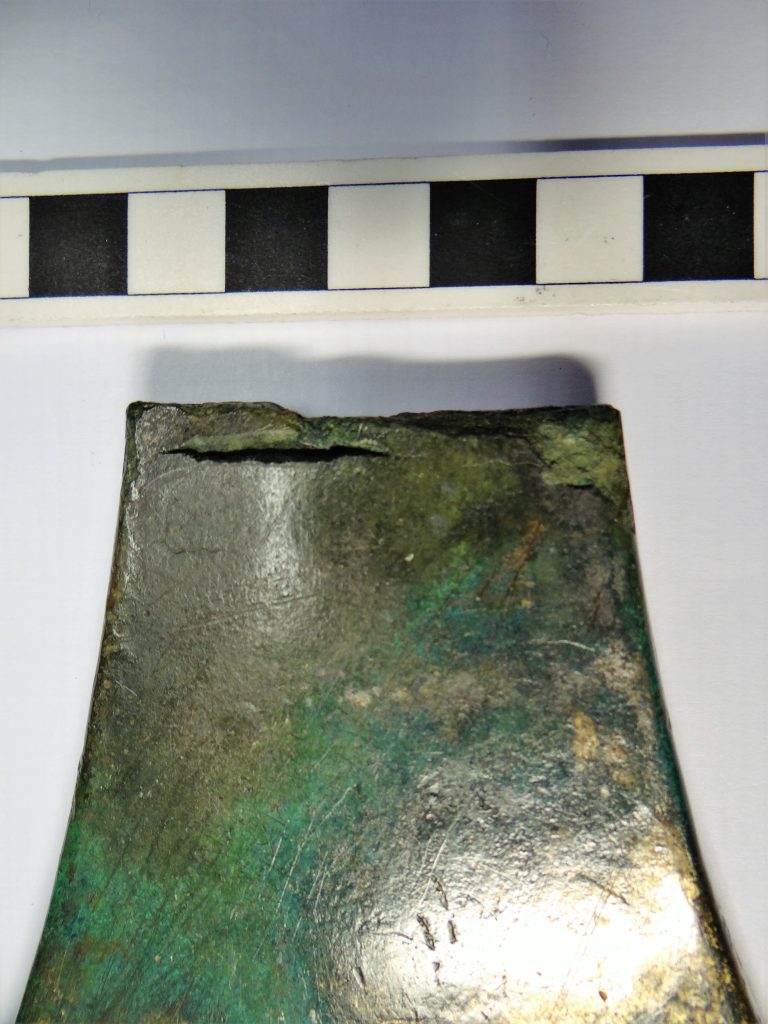
Destruction breeds creation
Finally, we might consider how destruction of objects allowed the creation of something different entirely. Towards the end of the Bronze Age, large groups of metalwork were occasionally fragmented and buried. Sometimes these were broken in preparation for recycling, but there are also cases where destruction clearly went beyond this.
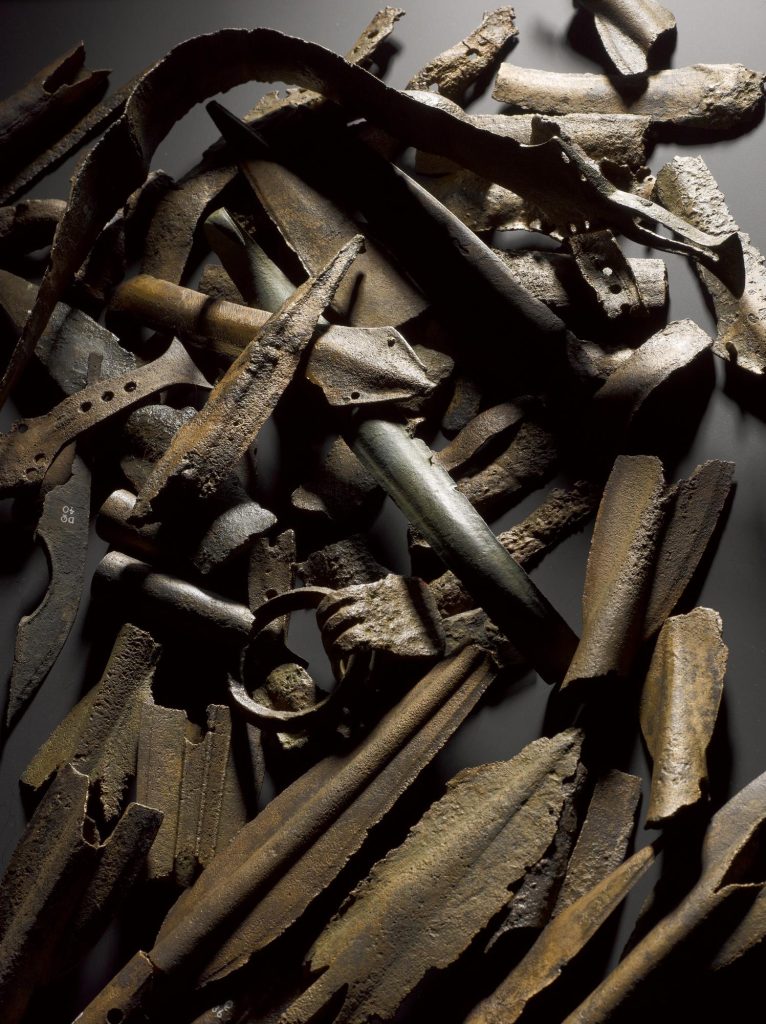
At Duddingston Loch, Edinburgh, as many as 50 swords and spears were extensively bent, broken and burnt before they were thrown in the loch, perhaps over several occasions. At Peelhill Farm, Lanarkshire, another hoard of weapons, including 25 spears and one sword, saw the same treatment before it was sunk into marshes.
The ‘sacrifice’, if that is the right word, of such substantial quantities of weaponry on a large fire would have been a dramatic event in its own right. The striking nature of destroying weapons was perhaps a public and symbolic spectacle, possibly to finalise a conflict and create a memorable event through which to mark it. Long after the destroyed weapons were cast in the water, the performance of their destruction and deposition would be remembered by the community.
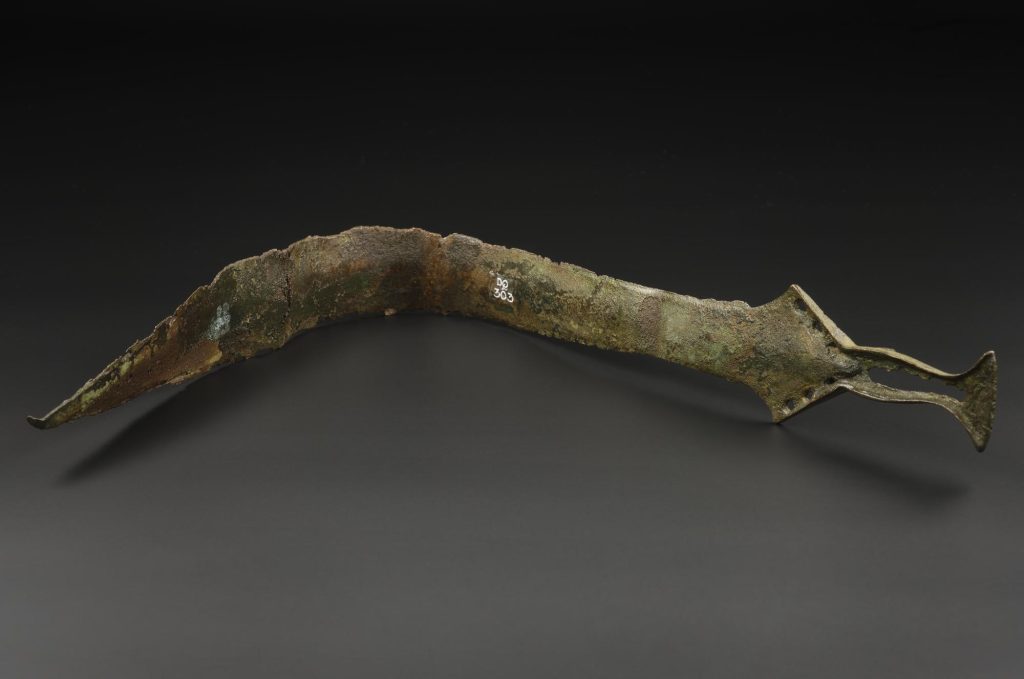
Valuing damage
Damaged objects give us new perspectives on the dynamics of the past and the people involved in their creation, destruction, and memory. At the same time, it encourages us to think more carefully about broken objects in the present and what we see in museums. You might be surprised to hear you won’t see a rolled up lunula in a museum: they were all unfolded and unrolled when discovered in the 18th and 19th centuries and are preserved in their original unrolled state.
Yet for me, this obscures a key part of the story of those objects. Broken and damaged pieces of axes, swords and spears transform our understanding of what these objects meant, and there is tremendous value in appreciating them because of, rather than in spite of, their damaged state. Damage attests to the creation of a different kind of value through destruction, a lesson that applies just as much to the Information Age as it does to the Bronze Age.
To learn more about the destruction and deposition of metalwork in Bronze Age Britain, see Dr Matt Knight’s book, Fragments of the Bronze Age: The Destruction and Deposition of Metalwork in South-West Britain and its Wider Context, available from Oxbow Books.
